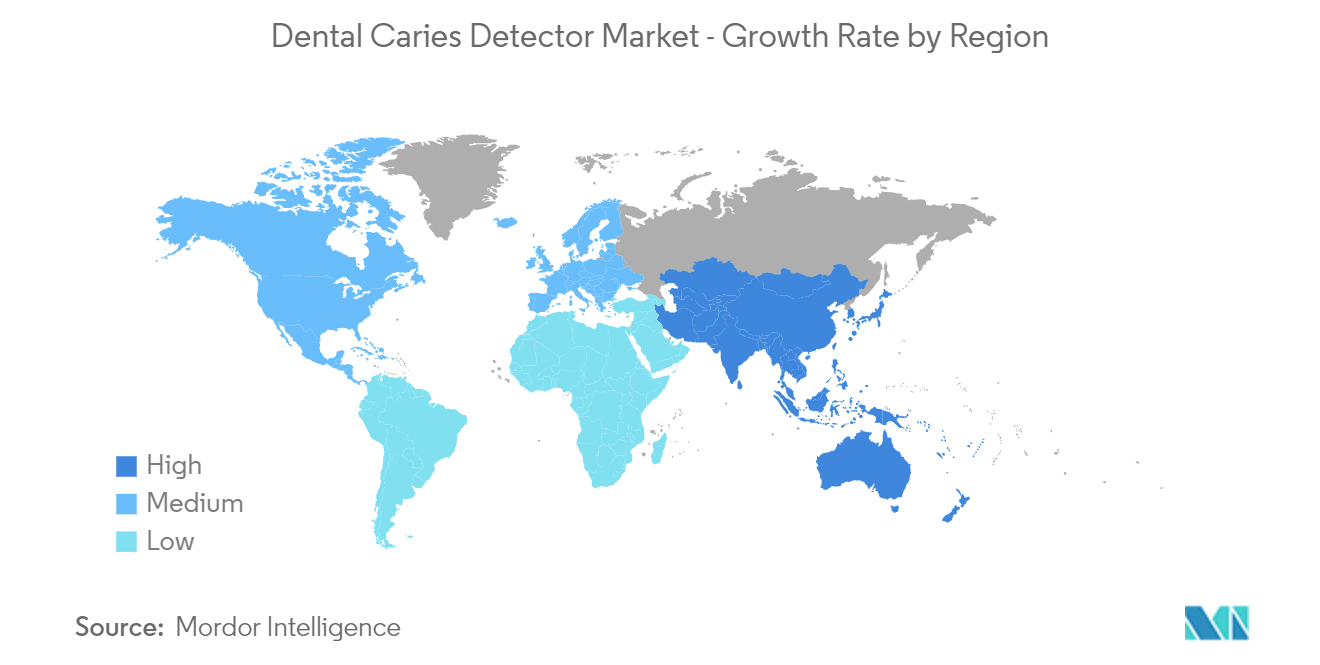Market Trends of Global Dental Caries Detector Industry
This section covers the major market trends shaping the Dental Caries Detector Market according to our research experts:
The Laser Fluorescent Caries Detector is Expected to Hold a Major Market Share in the Dental Caries Detector Market
Laser fluorescence has become generally acknowledged as an early caries detection approach since it has a high accuracy of more than 90% and is less invasive than x-rays. Diagnodent, a laser preventive device, accurately reports bone density tests. Compared to teeth with lesser bone density, teeth with higher bone density reflect less light. Teeth with lower densities are more susceptible to decay, and the dentist can prevent decay with fluoride treatments or at-home dental hygiene products.
Besides, the launch of technologically advanced products supports market growth. For instance, in January 2021, Polaroid HealthCare introduced a new Polaroid P31 Caries Detector. With only one push of the capture button, the Polaroid P31 is the first Full HD 1920 x 1080P Caries Detection gadget that allows the user to view all three techniques of visible caries detection simultaneously.
Each detection mode has its own benefits and drawbacks and may or may not be suitable for every case. The P31 solves this problem by recording a White light (natural color) image, a Fluorescence image, and a Transillumination image and placing them side by side to compare them and gain the most information that aids in making an informed decision regarding the needed treatment plan. These factors are expected to boost the segment's growth.

North America is Expected to Hold a significant share in the market and is expected to do the Same in the Forecast Period.
North America dominated the market and is expected to expand at a significant CAGR in the forecast period. This growth is attributed to the rising geriatric population, strong medical infrastructure, well-established reimbursement policies, key market players, and preventive and restorative dental treatment advancements.
Moreover, according to the American Dental Association updated in July 2021, 85% of individuals in the United States truly value dental health and consider oral health an essential aspect of overall care. Combining all these factors will make North America the most promising, high-growth market in the forecast period.
From the initial shutdown in March 2020 to the current day, the COVID-19 pandemic has significantly influenced the dentistry profession. The main consequence of the pandemic on dental practices in Canada, according to an article published in February 2021 titled "The Biggest Impact of COVID-19 on Dentistry," has been a decline in revenue. As dentists could not practice during the initial lockdown, revenue suffered the most. However, as the country approaches a year of living with the pandemic, it has been demonstrated that dentistry is a critical service, and practices have been able to stay open despite new lockdowns around the country."
Also, as per another article published in September 2020, "A New Study Explores COVID-19's Significant Impact on the Dental Industry," the COVID-19 pandemic has profoundly impacted the health care system, including the dental industry. When the pandemic first became rampant in the United States in March and April, many dental practices closed except for emergencies. Even after they reopened, changes were noticeable. According to an American Dental Association poll of dentists taken the week of Aug. 10, 98.9% of respondents were open, but only 47.6% reported "business as usual"; 51.3% were open but had "lower patient volume than usual."
During the pandemic, however, dentists have resorted to the model that does not require an in-person intermediary. Some dentists set up telehealth services to provide virtual care to their patients during the earlier shutdown in 2020. Also, in April 2020, the ADA disseminated interim guidelines on billing and coding for teledentistry visits to facilitate the use of teledentistry during the pandemic.
Furthermore, the Centers for Disease Control and Prevention (CDC) strives to eliminate cavity rate inequities and incorporate oral health programs into chronic disease prevention and medical care. North America will emerge as the most potential, high-growth market in the projection term due to the confluence of these variables.


